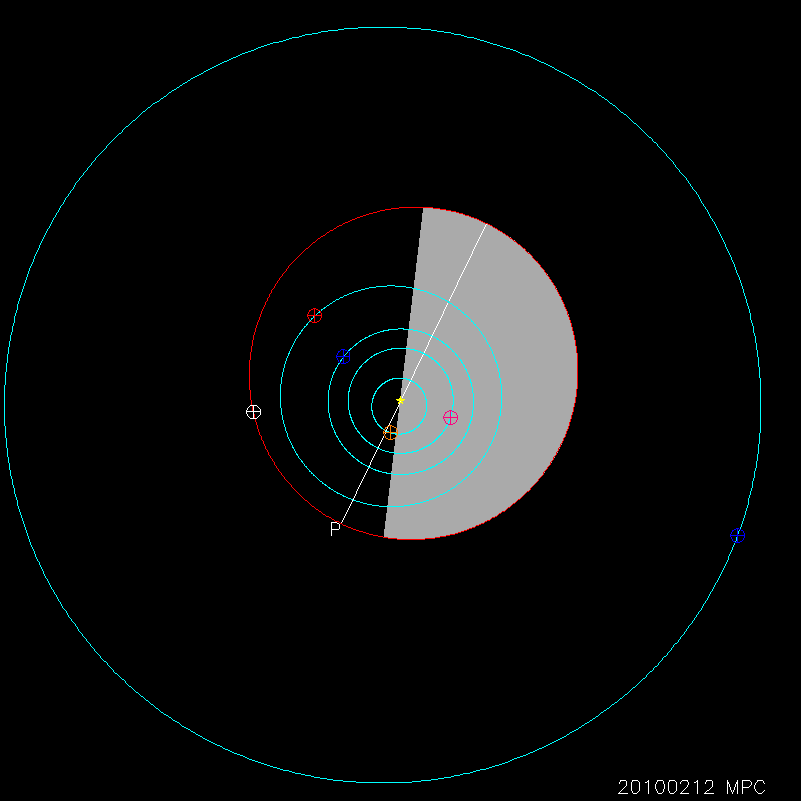(18132) Spector
Minor planet number 18132 has been named in honor of Phil Spector.The citation announcing the naming appeared on Minor Planet Circular 43046 (issued on 2001 July 5), from which the following is extracted with permission:
(18132) Spector = 2000 ON9
Discovered 2000 July 30 by J. Broughton at Reedy Creek Observatory.
New York-born record producer and songwriter Phil Spector (b. 1940)
who at 18 recorded his first hit song and by 1964 had produced 20 hits like the
superb Be My Baby, performed by the Ronettes. He broke new ground with
his wall-of-sound techniques.
Read about how minor planets are named.
About (18132) Spector
(18132) Spector is in a 3.47-year elliptical orbit around the sun ranging in distance from 281.0 million km (at perihelion, closest point to the sun) to 405.1 million km (at aphelion, furthest point from the sun).The next perihelion passage will occur on 2010 July 13.5 UT.
The orbit is inclined by 2.8 degrees to the ecliptic plane (the plane of the earth's orbit about the sun).
There is little information on the physical properties of (18132) Spector. Even its diameter is uncertain--a range of 2 to 4 km is probable.
You will need a telescope to see this minor planet as its maximum brightness is some 1/20647 of the brightness of the faintest objects that can be seen with the unaided eye.
The diagram below show the orbit of (18132) Spector in relation to the major planets in the inner solar system.

This view of the inner solar system is seen from the north ecliptic pole. The sun is the yellow star at the center of the image. The blue orbits represent, in increasing distance from the center, the major planets Mercury, Venus, Earth, Mars and Jupiter. The position of each major planet at the date indicated at the bottom of the plot is shown by the large circled cross. The orbit of the minor planet is shown in red, with the location of the minor planet (at the date indicated at the bottom of the plot) shown as a white circled cross. From this vantage point the planets revolve around the sun in a counter clockwise direction. The vernal equinox is off to the right. The portion of the minor planet's orbit that is below the plane of the earth's orbit is shaded grey. The perihelion point of the minor planet's orbit is at the end of the white straight line through the sun indicated by "P".
Also available is information on provisional designations.
Where is (18132) Spector tonight? Customisable ephemerides are available.
Back to Rock & Roll Minor Planets
